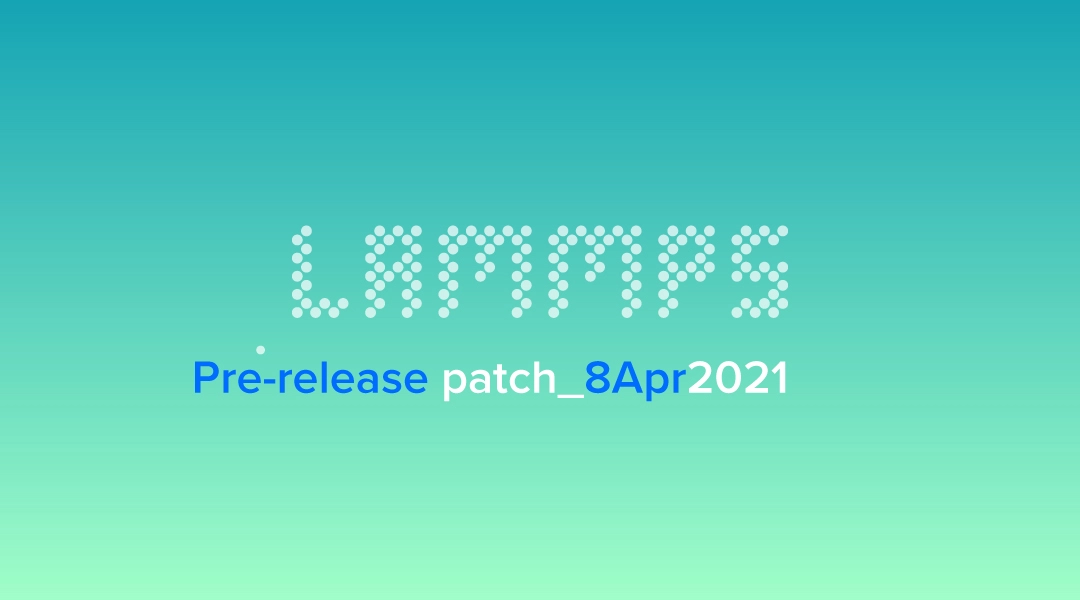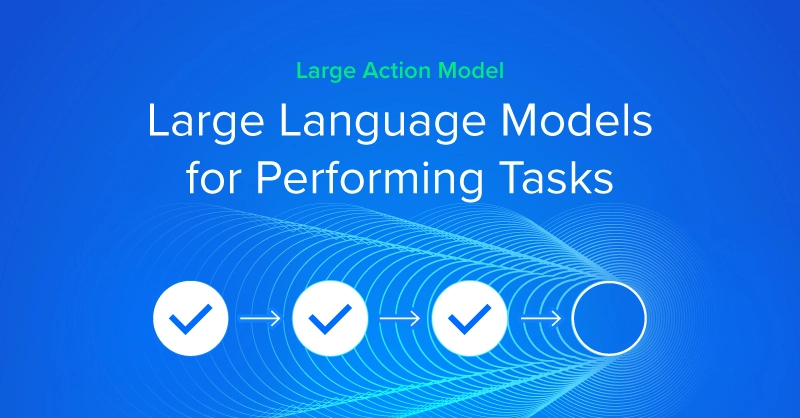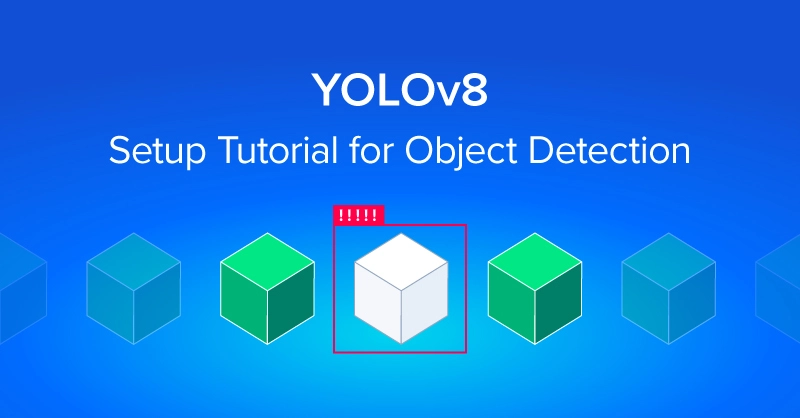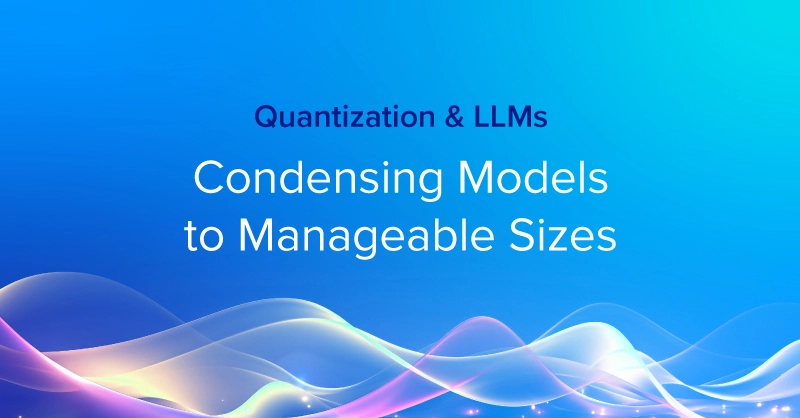
LAMMPS Patch Release Overview
What is LAMMPS used for?
LAMMPS is a classical molecular dynamics (MD) code that models ensembles of particles in a liquid, solid, or gaseous state. It can model atomic, polymeric, biological, solid-state (metals, ceramics, oxides), granular, coarse-grained, or macroscopic systems using a variety of interatomic potentials (force fields) and boundary conditions. It can model 2D or 3D systems with only a few particles up to millions or billions.
LAMMPS can run on single processor laptops or desktops, but is designed for parallel computers using message-passing techniques and a spatial-decomposition of the simulation domain. This includes shared-memory boxes and distributed-memory clusters and supercomputers. Many of its models have versions that provide accelerated performance on CPUs, GPUs, and Intel Xeon Phis. The code is designed to be easy to modify or extend with new functionality.
Interested in getting faster results?
Learn more about LAMMPS Certified GPU Workstations and Servers starting at $4,300
Changes since the patch release 10 March 2021:
- New PLUGIN package providing a "plugin" command that allows loading and unloading of LAMMPS styles from separately compiled shared object files at runtime (Axel Kohlmeyer, Temple U) PR #2650
- Refactoring of core LAMMPS code and packages to increase code reuse and readability, simplify text parsing, simplify internal fix/compute generation, improve thread safety (Richard Berger and Axel Kohlmeyer, Temple U) PR #2655, PR #2657, PR #2674, PR #2678, PR #2683, PR #2685, PR #2694, PR #2700
- Additional unit test tools and test inputs to increase coverage of automated testing (Richard Berger and Axel Kohlmeyer, Temple U) PR #2308, PR #2653, PR #2658, PR #2679, PR #2681, PR #2682, PR #2695
- Updates and additions to PyLammps examples (Richard Berger, Temple U and Evangelos Voyiatzis, Royal DSM) PR #2662, PR #2664
- Updates and bugfixes to the USER-REACTION package (Jake Gissinger, NASA) PR #2675
- Updates and bugfixes to the KOKKOS package (Stan Moore, SNL) PR #2677
- Updates and bugfixes to the GPU package (Mike Brown, Intel Corp. and Nicholas Curtis, AMD, and Richard Berger, Temple U) PR #2691, PR #2692
- Improved error/exception detection and handling in the LAMMPS python module (Richard Berger, Temple U) PR #2668
- Various small bug fixes, coding style and formatting updates (multiple authors) PR #2654, PR #2659, PR #2661, PR #2663, PR #2666, PR #2670, PR #2671, PR #2685, PR #2686, PR #2689, PR #2690, PR #2696, PR #2697, PR #2698
Backward compatibility notes:
- there are more strict checks about the order of rigid fixes and fixes that change box dimensions. LAMMPS will now correctly error out where it previously would silently ignore some fixes.
- checks for using run_style verlet versus run_style respa have been made consistent across the code and fully aware of suffixes
- the meaning of the request ID argument for accessing neighbor lists through the library and python interface has changed. it will function the same for the typical case of having just a single neighbor lists, but see the manual for other cases.
This release has 2 assets:
- Source code (zip)
- Source code (tar.gz)
Visit the release page to download them.
About LAMMPS
LAMMPS (Large-scale Atomic/Molecular Massively Parallel Simulator) a classical molecular dynamics simulation code designed to run efficiently on parallel computers. It was developed at Sandia National Laboratories, a US Department of Energy facility, with funding from the DOE. It is an open-source code, distributed freely under the terms of the GNU Public License (GPL).
Have any questions about LAMMPS or other applications for molecular dynamics? Contact Exxact Today

LAMMPS Patch Release 8 April 2021
LAMMPS Patch Release Overview
What is LAMMPS used for?
LAMMPS is a classical molecular dynamics (MD) code that models ensembles of particles in a liquid, solid, or gaseous state. It can model atomic, polymeric, biological, solid-state (metals, ceramics, oxides), granular, coarse-grained, or macroscopic systems using a variety of interatomic potentials (force fields) and boundary conditions. It can model 2D or 3D systems with only a few particles up to millions or billions.
LAMMPS can run on single processor laptops or desktops, but is designed for parallel computers using message-passing techniques and a spatial-decomposition of the simulation domain. This includes shared-memory boxes and distributed-memory clusters and supercomputers. Many of its models have versions that provide accelerated performance on CPUs, GPUs, and Intel Xeon Phis. The code is designed to be easy to modify or extend with new functionality.
Interested in getting faster results?
Learn more about LAMMPS Certified GPU Workstations and Servers starting at $4,300
Changes since the patch release 10 March 2021:
- New PLUGIN package providing a "plugin" command that allows loading and unloading of LAMMPS styles from separately compiled shared object files at runtime (Axel Kohlmeyer, Temple U) PR #2650
- Refactoring of core LAMMPS code and packages to increase code reuse and readability, simplify text parsing, simplify internal fix/compute generation, improve thread safety (Richard Berger and Axel Kohlmeyer, Temple U) PR #2655, PR #2657, PR #2674, PR #2678, PR #2683, PR #2685, PR #2694, PR #2700
- Additional unit test tools and test inputs to increase coverage of automated testing (Richard Berger and Axel Kohlmeyer, Temple U) PR #2308, PR #2653, PR #2658, PR #2679, PR #2681, PR #2682, PR #2695
- Updates and additions to PyLammps examples (Richard Berger, Temple U and Evangelos Voyiatzis, Royal DSM) PR #2662, PR #2664
- Updates and bugfixes to the USER-REACTION package (Jake Gissinger, NASA) PR #2675
- Updates and bugfixes to the KOKKOS package (Stan Moore, SNL) PR #2677
- Updates and bugfixes to the GPU package (Mike Brown, Intel Corp. and Nicholas Curtis, AMD, and Richard Berger, Temple U) PR #2691, PR #2692
- Improved error/exception detection and handling in the LAMMPS python module (Richard Berger, Temple U) PR #2668
- Various small bug fixes, coding style and formatting updates (multiple authors) PR #2654, PR #2659, PR #2661, PR #2663, PR #2666, PR #2670, PR #2671, PR #2685, PR #2686, PR #2689, PR #2690, PR #2696, PR #2697, PR #2698
Backward compatibility notes:
- there are more strict checks about the order of rigid fixes and fixes that change box dimensions. LAMMPS will now correctly error out where it previously would silently ignore some fixes.
- checks for using run_style verlet versus run_style respa have been made consistent across the code and fully aware of suffixes
- the meaning of the request ID argument for accessing neighbor lists through the library and python interface has changed. it will function the same for the typical case of having just a single neighbor lists, but see the manual for other cases.
This release has 2 assets:
- Source code (zip)
- Source code (tar.gz)
Visit the release page to download them.
About LAMMPS
LAMMPS (Large-scale Atomic/Molecular Massively Parallel Simulator) a classical molecular dynamics simulation code designed to run efficiently on parallel computers. It was developed at Sandia National Laboratories, a US Department of Energy facility, with funding from the DOE. It is an open-source code, distributed freely under the terms of the GNU Public License (GPL).
Have any questions about LAMMPS or other applications for molecular dynamics? Contact Exxact Today




